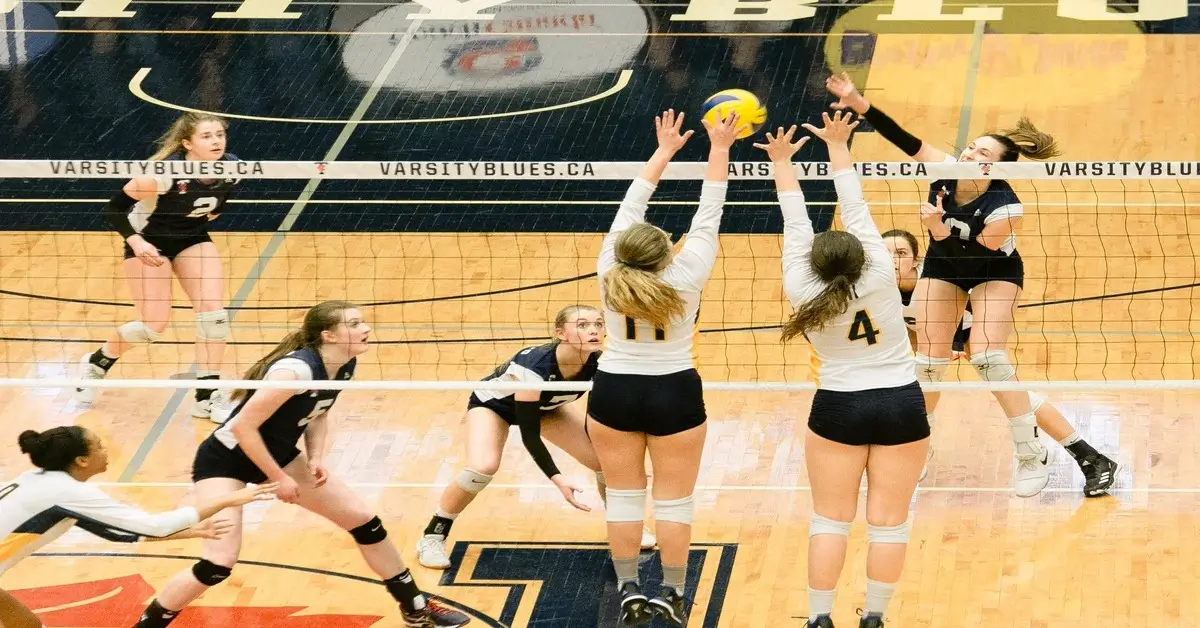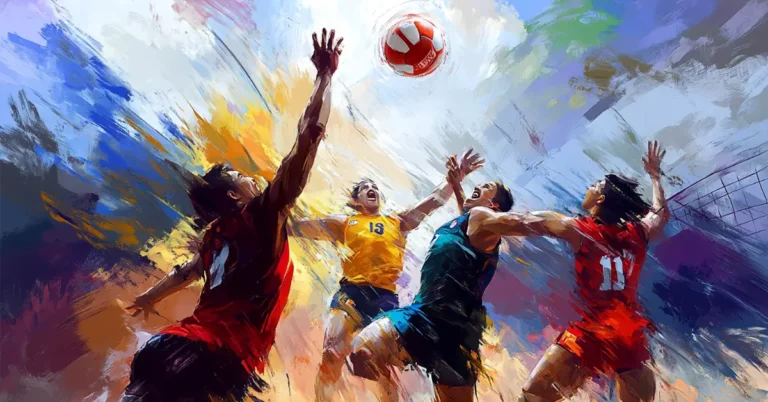As experts we can easily tell which teams master the rotation in volleyball and which teams seem to have their troubles with it. We know how crucial rotation in volleyball is to the overall flow and success of the game. The way players move around the court in organized patterns not only ensures equal opportunities for each team member, but also helps us strategically outsmart the opposing team.
By mastering these rotations, we create a seamless game experience that allows each player to showcase their skills and contribute to the team’s success. Whether you’re a beginner or a seasoned player, understanding these fundamentals can elevate your gameplay and overall enjoyment of the sport.
Understanding the Essentials of Rotation in Volleyball
Rotation in volleyball occurs when a team wins a point, and its players move one position clockwise around the court. This is essential to maintain a fair and competitive game, ensuring that all players have equal opportunities to contribute. The act of rotating keeps the game flowing and adds a layer of strategy to the competition.
There are different rotation formations that teams can use, each with its specific advantages and disadvantages. The most common ones are the 5-1, 4-2, and 6-2 rotations.
- 5-1 rotation: In this formation, five players maintain their positions, with only one player rotating among them. This system is widely used in both professional and amateur volleyball games, as it offers more tactical options for the team.
- 4-2 rotation: This system consists of four hitters and two setters, with the setters positioned in the back row. Teams usually adopt this formation when they have tall and strong hitters who can effectively attack from the back row.
- 6-2 rotation: The 6-2 formation features six players who can all hit and two setters. This rotation is a more offensive tactic, providing greater flexibility and multiple attack options.
Understanding the best rotation in volleyball for your team depends on factors such as player skills, strengths, and the overall team strategy.
Key Player Positions and Their Roles in Rotation in Volleyball
As the game begins, each player takes on a specific position: setter, libero, outside hitter, middle blocker, opposite hitter, and defensive specialist (DS). Each of these positions contributes to a team’s performance, and understanding each role is crucial for mastering the art of rotating efficiently.
The setter is the playmaker responsible for setting up plays and distributing the ball to the hitters. They usually stand close to the net, and when positioned in the back row, they must avoid attacking the ball above the net height.
Middle blockers excel at blocking the opponents’ attacks and are often positioned near the net during the front row rotation. They also get involved in quick attacks, making them vital in both offense and defense.
Outside hitters are strong attackers positioned usually on the left side of the court. They need to be versatile, as they hit from both the front and back rows, contributing to the team’s offense.

The opposite hitter plays on the right side of the court and is a vital offensive weapon. Their primary responsibility is to block and attack from the right side, and they often step in as a secondary setter when the main setter finds themselves out of position.
Liberos are defensive specialists who focus on receiving serves, digging, and passing the ball. They wear a different colored jersey, and since they don’t rotate, they can substitute freely for any back row players.
The defensive specialist (DS) is another player responsible for receiving serves, digging, and passing the ball. They also specialize in serving, and although not as agile as liberos, they hold an essential position in the back row.
In addition to understanding the roles of each position, knowing the rotation rules is deciding. For example also that the serving player must maintain their position until the serve is completed. No substitutions are allowed until the next rotation, and each front row player must maintain their respective positions with respect to the back row players.
If you want to learn more about positions in volleyball check out our post here.
Advanced Rotation in Volleyball Strategies
One critical aspect of rotation in volleyball is the rotation order, which dictates the serving sequence while influencing how we set up our offense and defense on the court. To maximize our team’s potential, we need to explore various rotation strategies like 6-2, 5-1, and 4-2.
Another vital element in advanced rotation in volleyball strategies is the serve-receive. It’s crucial because it’s our first line of defense. When our team is in serve-receive mode, we arrange ourselves in a position to optimize diggers, setters, and hitters, forming a solid foundation for offensive options.

In advanced play, offensive options come to life when we effectively use the attack line. Keeping the attackers behind the attack line while serving can create powerful attacks and make it harder for the defending team to anticipate our moves.
As a volleyball coach or a team leader, understanding different rotation strategies is vital in achieving more flexibility and adaptability in the game. Maintaining excellent communication is key to preventing out of rotation scenarios, which can lead to confusion and costly penalties. Always be aware of your teammates’ positions and shifts to ensure smooth rotations.
Decoding the Volleyball Rule Book
One important aspect to consider is the need to avoid overlap violations. These happen when a player is not in the correct position during a serve. In this section, we will dive into violations and consistency, based on the NCAA volleyball rule book.
The overlap rule ensures that players are in the correct order based on their initial base positions. To avoid overlap violations, players must maintain a front-to-back and side-to-side positioning order. Front row players should remain in front of the corresponding back row player, and side-to-side positioning is determined by the players adjacent to each other in the rotation order.

Let’s look at a few types of overlap violations:
- A backcourt player is closer to the net than the corresponding frontcourt player
- A side-to-side violation occurs when a player is not positioned between the two adjacent players in the rotation order.
It is the responsibility of each player to ensure that they are in the correct position. Consistency is key, as a single violation can lead to a loss of rally point and a potential momentum shift in the game.
Understanding the various alignment rules in the NCAA volleyball rule book will enable teams to optimize their serve receive formations and prevent costly violations.
Our Opinion on Rotation in Volleyball
We believe rotation in volleyball is a decisive aspect of the game.
We find that a single setter approach allows for consistency in the offense, and the team can focus more on attacks from the front row.
We cannot stress enough how important it is for players to be aware of their positions and the flow of the game. In our experience, successful teams have fantastic communication skills and can avoid misunderstandings during rotations.
One thing we love about rotation in volleyball is the constant movement. It keeps players engaged and on their toes, always ready to attack or defend. With a dynamic game, there are no dull moments, as every player gets a chance to shine throughout the match.
What are the different types of rotation in volleyball?
There are several types of volleyball rotations, each with unique strategies and arrangements for the players. Some of the most commonly used rotations are the 5-1, 6-2, and 4-2 systems. These systems refer to the number of hitters and setters in the team and could greatly impact the team’s offense and defense.
How does the 6-2 rotation work in volleyball?
In the 6-2 rotation, there are six hitters and two setters. When a setter moves to the front row, they become a hitter, and a back-row setter takes over their role. This system maximizes offensive power by having three front-row attackers, while the libero can replace a back-row setter for improved defensive capabilities.
What is the 4-2 volleyball rotation system?
The 4-2 volleyball rotation system has four hitters and two setters on the court. It means there are two attackers in the front row, which helps the team with multiple scoring options. This system is considered relatively simpler and is often used by beginner teams to learn the basics of volleyball rotations.
How do you rotate effectively in a volleyball game?
Effective rotation in a volleyball game requires clear communication among players, ensuring each player knows their position on the court, and always being ready to transition from offense to defense. Players should remain in their designated court zones until the serve, then quickly move to their base positions. Keep an eye on your opponents and be prepared to adjust your position based on the opposing team’s attacks.
What are some common mistakes in volleyball rotation?
Common mistakes in volleyball rotation include overlaps, poor communication among players, and being out of position when the ball is served. Overlaps can lead to rotational violations, resulting in a point loss. To avoid these mistakes, players must be aware of the volleyball rotation rules and work together as a team to maintain proper positioning and communication.
How can a beginner learn volleyball rotations?
Beginners can learn volleyball rotations by starting with a simpler rotation system like the 4-2 and gradually progressing to more complex systems like the 6-2 or 5-1. Watching volleyball games, seeking coaching, and practicing with a team are also excellent ways to grasp the concept of rotation. Participating in drills and exercises to improve communication, footwork, and positioning on the court will further enhance a beginner’s understanding of volleyball rotations.
We hope you could find some valuable input about the Rotation in Volleyball. We would be curious about your way of rotation. How do you rotate in your team? What is your secret? Let us know in the comments.






